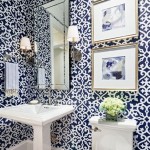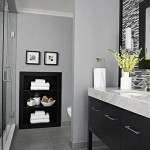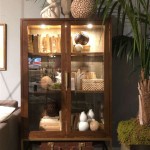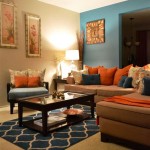Decorating A Small Home Office Guest Room
The challenge of designing a small home office guest room lies in maximizing functionality without sacrificing comfort or aesthetic appeal. Successfully merging these two distinct purposes requires careful planning, strategic furniture selection, and creative space-saving solutions. This article will explore key considerations and practical approaches to transforming a limited area into a productive workspace and a welcoming guest accommodation.
Prioritizing Multi-Functional Furniture
Furniture plays a crucial role in achieving a harmonious balance between office functionality and guest room comfort. Selecting pieces designed for multiple purposes is paramount in small spaces. Consider a sofa bed as a primary seating option. During the day, it serves as a comfortable place to relax or take a break from work. At night, it transforms into a bed for guests. Opt for a sofa bed with a high-quality mattress for optimal guest comfort.
A foldable or wall-mounted desk offers another space-saving solution. When not in use, it can be folded away, freeing up valuable floor space. Choose a desk with built-in storage options, such as drawers or shelves, to keep office supplies organized and readily accessible. If a foldable desk isn't suitable, consider a small, streamlined desk that can easily be converted into a side table when guests arrive.
Storage ottomans provide both seating and storage. They can be used as footrests while working and as extra seating for guests. The storage compartment can house office supplies, blankets, or pillows, keeping clutter at bay. Nesting tables are also versatile options. They can be used as individual desks or side tables and can be stacked together to save space when not needed.
When selecting furniture, pay attention to the overall scale and proportion. Avoid bulky, oversized pieces that can overwhelm the space. Opt for furniture with clean lines and a minimalist design to create a sense of openness. Light-colored furniture can also help to make the room feel brighter and more spacious.
Optimizing Vertical Space and Storage
In a small room, utilizing vertical space is essential for maximizing storage and functionality. Wall-mounted shelves provide ample storage without taking up valuable floor space. They can be used to store books, files, decorative items, or guest amenities. Install shelves at varying heights to create visual interest and maximize storage capacity.
Tall, narrow bookcases can also be used to store a variety of items. Choose bookcases with adjustable shelves to accommodate different sizes of books and objects. Place them against a wall to minimize their footprint. Consider using decorative boxes or baskets to organize smaller items on the shelves.
Cabinets that reach the ceiling provide maximum storage capacity. Use them to store less frequently used items, such as seasonal decorations or extra office supplies. Install doors or drawers to conceal the contents and create a clean, organized look. Alternatively, open shelving can add visual interest and provide easy access to frequently used items.
Consider using wall-mounted organizers to store smaller items, such as pens, pencils, and notepads. These organizers can be easily hung on the wall and provide a convenient storage solution. Utilize hooks to hang coats, bags, or other items. Install hooks behind the door or on a blank wall to maximize space utilization.
Over-the-door organizers are another effective way to maximize storage space. They can be used to store shoes, accessories, or cleaning supplies. Choose organizers with clear pockets to easily see the contents. Consider incorporating a pegboard on a wall or inside a closet door. This creates a versatile and customizable organizational system for office supplies and tools.
Creating a Functional and Comfortable Workspace
Designing a functional and comfortable workspace is crucial for productivity and well-being. Position the desk in a location that provides adequate natural light. Natural light is essential for reducing eye strain and boosting mood. If natural light is limited, supplement it with artificial lighting.
Invest in a comfortable and ergonomic chair. A good chair can help to prevent back pain and improve posture. Choose a chair with adjustable height, lumbar support, and armrests. Consider using a monitor stand to raise the monitor to eye level. This can help to reduce neck strain. An adjustable monitor arm can also provide greater flexibility in positioning the monitor.
Organize the desk to minimize clutter and maximize efficiency. Keep essential items within easy reach. Use desk organizers to store pens, pencils, and other supplies. Create a designated space for paperwork and files. Label folders and drawers to make it easy to find what is needed.
Consider adding plants to the workspace. Plants can help to purify the air and create a more relaxing and inviting atmosphere. Choose low-maintenance plants that are easy to care for. Succulents and cacti are good options. A small desktop fountain can also add a touch of tranquility to the workspace.
Personalize the workspace with photos, artwork, or other decorative items. These items can help to make the space feel more inviting and inspiring. However, avoid overcrowding the space with too many items. A few well-chosen pieces can make a big impact. Consider using a bulletin board or whiteboard to display important notes, reminders, or inspirational quotes.
Transforming the Space into a Welcoming Guest Room
When guests arrive, it's important to transform the office space into a comfortable and welcoming guest room. Remove any personal items from the desk and clear off any clutter. Provide a clean and comfortable bedding set, including sheets, blankets, and pillows. Offer guests a choice of pillow firmness to ensure their comfort.
Provide extra blankets and pillows in case guests get cold. Place them in a decorative basket or storage ottoman. Offer a small welcome basket with toiletries, such as shampoo, conditioner, and soap. Include a small snack or beverage for guests to enjoy upon arrival. A small vase of fresh flowers can add a welcoming touch to the room.
Ensure that the room is well-lit and ventilated. Provide a bedside lamp for reading. Open the windows to allow fresh air to circulate. Offer guests a comfortable place to sit, such as an armchair or a bench. Provide a mirror for guests to use while getting ready. A full-length mirror can be hung on the wall or placed behind the door.
Provide guests with access to Wi-Fi and any other necessary amenities. Include a welcome note with the Wi-Fi password and any other important information they need to know. Offer guests a place to hang their clothes, such as a closet or a coat rack. Ensure that the room is clean and tidy before guests arrive.
Consider adding a small entertainment option, such as a television or a selection of books and magazines. This can help guests to relax and unwind after a long day of travel. Provide a small coffee maker or tea kettle for guests to make their own hot beverages. This can be a thoughtful gesture that guests will appreciate.
Selecting a Consistent Color Palette and Décor Theme
When decorating a small home office guest room, it's important to select a consistent color palette and décor theme. This will help to create a cohesive and harmonious space. Choose colors that are calming and relaxing, such as blues, greens, or grays. These colors can help to create a peaceful and productive atmosphere.
Consider using a neutral color for the walls, such as white, beige, or light gray. This will create a blank canvas that can be easily accessorized with pops of color. Use brighter colors for accents, such as throw pillows, artwork, or decorative items. Avoid using too many bold colors, as this can make the room feel overwhelming.
Choose a décor theme that reflects personal style and complements the overall design of the home. Themes can range from modern and minimalist to traditional and cozy. Incorporate elements that reflect the chosen theme, such as artwork, textiles, and accessories. Avoid using too many competing styles, as this can create a cluttered and confusing look.
Use textures to add visual interest and depth to the room. Combine different textures, such as smooth and rough, soft and hard. This can help to create a more inviting and comfortable space. Consider using natural materials, such as wood, stone, and cotton, to add warmth and texture to the room.
Pay attention to the details. Small details can make a big difference in the overall look and feel of the room. Choose high-quality hardware for furniture and cabinetry. Use decorative lighting fixtures to add ambiance. Incorporate personal touches that reflect individual style and personality.

Guest Bedroom Home Office Room Combo

Home Office Guest Room Design Micheala Diane Designs

Pin On Home

How We Created A Home Office Guest Room Studio Diy

8 Office Guest Room Ideas For A Versatile Space Decorilla

Creative Ways To Get More Guest Room Storage

25 Versatile Home Offices That Double As Gorgeous Guest Rooms Bedroom Office Room Combo

Home Design Ideas For That Tricky Guest Room And Office Combo The Boston Globe

25 Versatile Home Offices That Double As Gorgeous Guest Rooms Decoist

8 Office Guest Room Ideas For A Versatile Space Decorilla
Related Posts







